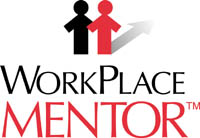CareerScope
Interest and Aptitude
Assessment Software
CareerScope FAQ's
Troubleshooting and
Installation Guide
WorkPlace Mentor
Community-based
assessment and
employment planning software
WPM User's Page
Resources for the
WorkPlace Mentor
Community
WinAt-Work
Technology-Based Learning For Career and Personal Growth
ES-TIP
Multimedia Employability Skills Curriculum
CSII
CareerScope Interest
Inventory Software
VRII
Vocational Research
Interest Inventory
Parts
Replacement
Parts
for Apticom
and Work Samples
Request Product Information

WPM Tip 1
Finding employers that are willing and able to work with you and your consumers
can be time consuming and sometimes frustrating. However, there are some steps
you can take to improve your odds. Try incorporating some of these suggestions
the next time you approach an employer about working with your organization.
Locating potential employers:
Check with your local Chamber of Commerce.
Contact your local Rotary Club.
Use personal contacts.
Try the “mom-and-pop” businesses in your area.
Your approach:
Know something about the business.
Make sure you are talking to the person who makes the decisions.
Be sure to tell them what YOU can do FOR them.
Leave behind a flyer or pamphlet that briefly explains who you are and what
you do
Find out when is a good time to call back – then DO IT.
What do YOU do to recruit employers? We would like to hear from you and
share your successful techniques with the rest of the WorkPlace Mentor
user community. Jot down your recruiting techniques and send them to
wpmsupport@vri.org with the subject
line “How we find employers”. Your
techniques will be included on the WPM User Page in the future!!
Go to www.ChamberofCommerce.com to find your local Chamber of Commerce. The
Chamber of Commerce is an advocate for local business, as well as a professional
networking association.
Go to www.rotary.org to find a local Rotary Club chapter. Rotary is an
organization of business and professional leaders working to address community
needs and promote peace and understanding.
Do you know someone who owns or runs a business in town? Do you know someone who
knows someone? Having a personal connection may not be a guarantee, but it
certainly will help you get your foot in the door.
Smaller “mom-and-pop” businesses are often more flexible because the person
working behind the counter may very well be the owner or person in charge.
There are fewer levels of management to deal with, and therefore they may be
more willing to try something new.
Publications from professional organizations.
Some professional organizations you belong to may have advertisements from
businesses or donor/supporter lists included in their periodical publications.
If these businesses talk-the-talk by advertising or supporting this
organization, they are probably more likely to walk-the-walk as well.
Having some knowledge about the business before you walk in the
door will result in greater credibility. This knowledge should
include knowing the type of business (retail women's clothing; food service;
telephone sales) as well as how they operate. For example, knowing
that a restaurant is extremely busy at lunch time can be very
important in your efforts - because you know not to try to talk to the manager at that time.
Talking to employees who seem genuinely interested in what you do may be easy,
but if you are not talking to the person who is able to make decisions for
the business, you may be wasting your time. Be sure to find out who is in
charge and make sure you speak directly to them.
Remember what business is all about. Businesses are more likely to be
willing to participate if they are getting something out of the deal.
Present yourself as a business person offering a service that can improve
their business.
Your first visit to an employer is not likely to result in an agreement to
work with you. Use that first visit to introduce the idea and to make a
strong first impression. Then leave the employer with something that gives
them all the information. Most employers will either need to think about
it or consult with someone else. Giving them something they can refer
back to will help them remember who you are.
At the end of your first visit, make a plan with the employer. Find out
how long they think they might need to consult or think about it. Tell
them that you will contact them on a certain date or within a specific time
frame – don’t just say you will be “in touch” or “I’ll call you soon”.
Make a plan – and STICK TO IT. Persistence and professionalism are the keys!
